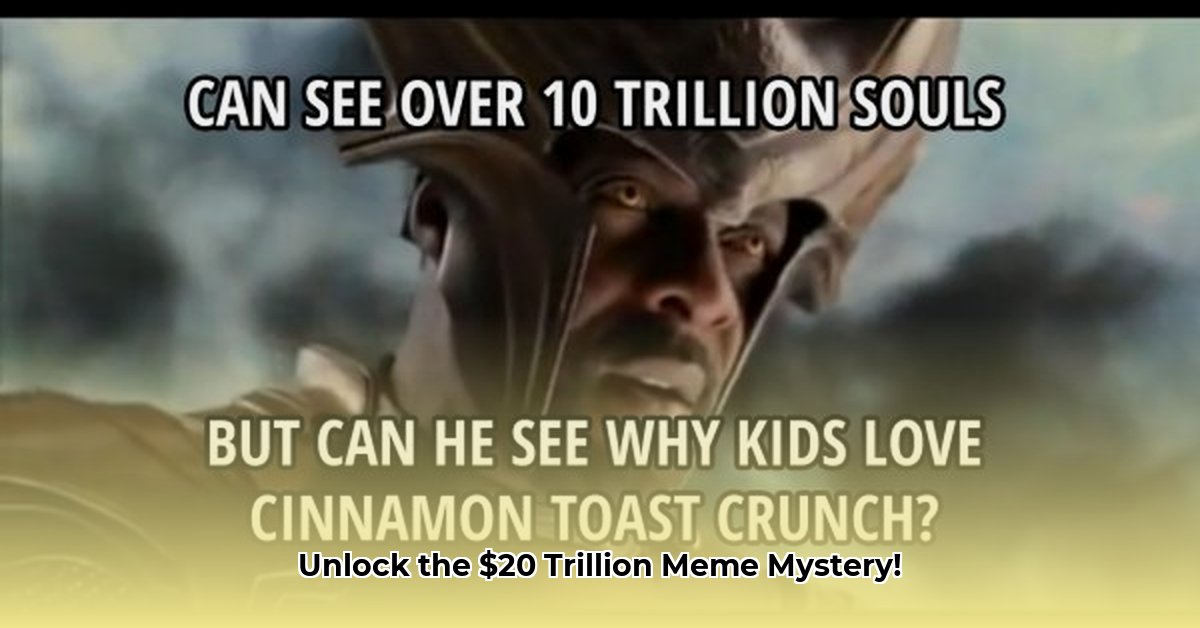
Another 20 Trillion Meme: Decoding the Viral Sensation
The internet is a breeding ground for viral trends, and the "Another 20 Trillion to Israel" meme is a prime example. This seemingly simple meme, featuring Patrick Star from SpongeBob SquarePants, has ignited widespread discussion about US foreign aid, political discourse, and the power of internet culture. But its impact goes far beyond simple online humor; it reflects a complex interplay of political sentiment, satirical expression, and the inherent ambiguities of digital communication. How did a cartoon starfish become a symbol of political debate? Let's decode this viral phenomenon.
Patrick Star's Unexpected Political Stardom
The meme's initial appeal lies in its inherent irony. The juxtaposition of a beloved children's character with a weighty political statement ("Another 20 Trillion to Israel") generates an immediate comedic effect. This ironic detachment allows users to engage with a potentially sensitive topic in a less confrontational manner. The absurdity of the image serves as a buffer, enabling discussion of complex issues without the intensity of direct political commentary. This inherent absurdity is precisely what fuels its versatility.
But why this number? The seemingly arbitrary figure of "20 trillion" amplifies the meme's satirical punch. The sheer magnitude is almost unbelievable, highlighting a sense of disbelief or skepticism surrounding the scale of financial aid. It acts as a rhetorical device, framing the discussion around perceived excess or mismanagement. This vagueness also contributes to its adaptability, allowing it to be repurposed across a wide range of contexts.
From Random Image to Global Phenomenon: The Meme's Journey
The meme's spread demonstrates the effectiveness of organic virality. It began its journey across platforms like X (formerly Twitter) and Reddit, quickly gaining traction within diverse online communities. The ease of sharing, combined with its adaptable format (a simple image and easily modifiable caption), accelerated its rapid growth. Meme generators like Imgflip further amplified its reach, allowing users to customize and personalize the meme, adding their own spin to the original concept. The ambiguous nature of the "20 trillion" figure contributes to its versatility, provoking diverse interpretations and fueling its continuous evolution.
Political Undertones: What's the Meme Really About?
While undeniably humorous, the "Another 20 Trillion to Israel" meme carries significant political undertones. Many interpret it as a commentary on US foreign aid policies and their perceived impact. However, the meme's ambiguity is a crucial element of its success. Its open-ended nature allows for multiple interpretations, reflecting the often-divided nature of political discussions. Is it a critique of foreign aid? A sarcastic jab at specific viewpoints? Or simply a playful commentary on current events? The lack of a definitive answer further enhances its appeal and its capacity to resonate with a vast audience.
Isn't it fascinating how a simple meme can spark such diverse interpretations? How do you think the meme's ambiguity contributes to its viral success?
The Two Sides of Viral Fame: Potential Risks and Rewards
The meme's remarkable spread is not without its challenges. Its very ambiguity makes it susceptible to misinterpretation and misuse. The imprecise "$20 trillion" figure can inadvertently contribute to misinformation and even unintentional offense. Its viral nature also increases the risk of its appropriation for malicious purposes or online harassment. Media literacy and responsible sharing become critical in mitigating these potential risks.
The Meme's Future: An Evolving Story
The "Another 20 Trillion to Israel" meme’s future is likely to be as dynamic as its past. Its adaptable nature ensures its ongoing relevance, even as political landscapes shift. It serves as a powerful example of the internet's ability to transform simple imagery into potent symbols of political expression. It reflects how we process and communicate information, and how we find humor in even the most complex and contentious situations. What new iterations will the meme spawn? Only time, and the ever-evolving internet, will tell.
How to Understand the Ironic Use of the "Another 20 Trillion to Israel" Meme
- Irony as a Tool: The meme’s power lies in its ironic juxtaposition of a lighthearted image (Patrick Star) with a serious political topic. This irony serves as a mechanism for engaging with complex political issues in a less confrontational manner.
- Adaptability and Ambiguity: The meme's strength is its adaptability. It's been used in countless contexts, each adding a new layer of meaning. However, this adaptability also creates ambiguity, allowing for a wide range of interpretations.
- Context is Key: Understanding the meme requires considering its context. Where did you see it? Who posted it? Understanding the surrounding dialogue is crucial for accurate interpretation.
The "Another 20 Trillion to Israel" meme is more than just a fleeting internet trend. It's a case study in the power of online communication, the role of irony and satire in political discourse, and the challenges of navigating the complexities of information in the digital age. Its continued evolution promises to remain a compelling subject of study for researchers exploring the intersection of memes, politics, and internet culture.